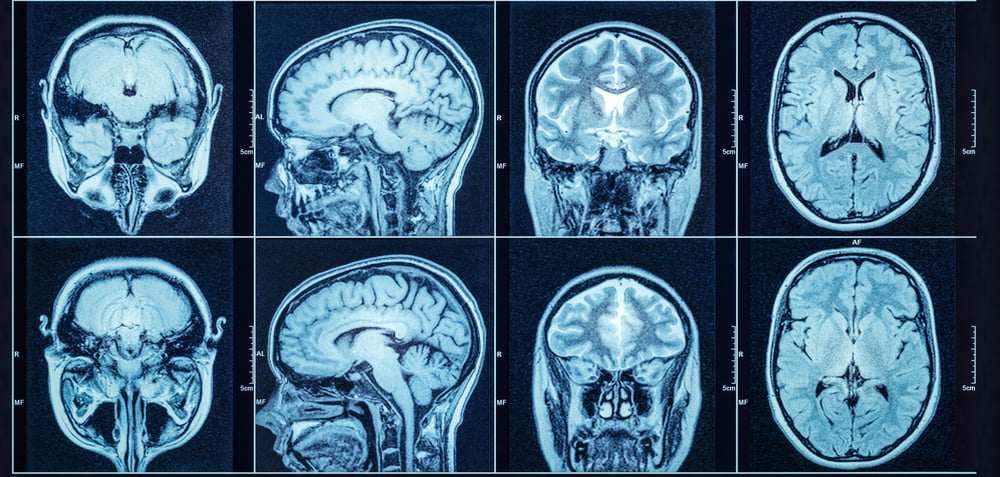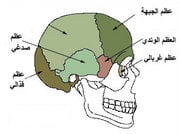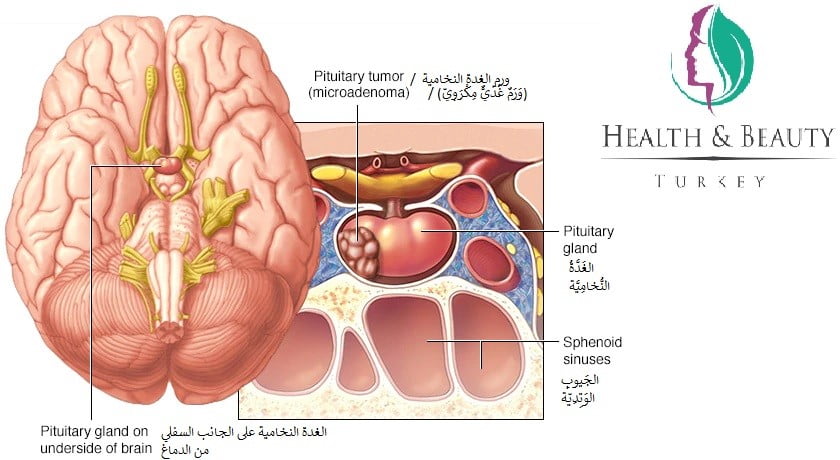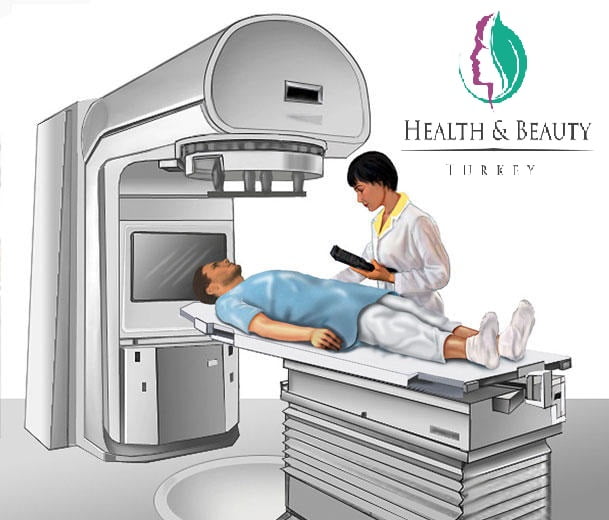Treatment of Skull Base Tumors in Türkiye
What is the skull base?
Skull base tumors are diverse and serious, and the skull base refers to the lower part of the skull. It is an irregular bony surface on which the brain rests. In this area, there are major and large blood vessels that supply the brain with the necessary essential nutrients and important nerves. The skull base consists of five bones that fuse together, separating the brain from the nasal sinuses, ears, eyes, and other parts of the head.

The skull base is composed of five bones:

- Ethmoid Bone: Divides the nasal cavity from the brain.
- Sphenoid Bone: Aids in forming the skull base, the sides of the skull, and the sides of the eye sockets.
- Occipital Bone: Forms the back and base of the skull and contains a hole called the foramen magnum, which allows the passage of the spinal cord.
- Frontal Bone: Forms the forehead and the upper part of the eye socket.
- Temporal Bones: Form the side walls of the skull.
There are also several openings in the skull base to allow the passage of blood vessels and nerves.
What are skull base tumors?
Skull base tumors can be benign (non-cancerous), most of which can develop along the skull base or directly below it in areas such as the nasal sinuses. However, skull base tumors can also be cancerous in rare cases, meaning they have the ability to spread to other parts of the body.
What are the types of skull base tumors?
Skull base tumors are categorized based on their location. However, not all skull base tumors are the same. There are various types of tumors, each of which grows slightly differently, and this is important to consider during treatment. The types of skull base tumors include:

- Pituitary adenomas: Abnormal cell growths in the pituitary gland that cause the pituitary gland to secrete too many hormones that regulate important bodily functions.
- Acoustic Neuromas: Benign tumors that develop on the balance (vestibular) and auditory nerves that transmit from the inner ear to the brain.
- Chondrosarcoma: A rare type of cancer that usually starts in the bones but can occasionally occur in soft tissues near the bones.
- Craniopharyngioma: A rare type of brain tumor derived from embryonic tissues of the pituitary gland, which commonly occurs in children but can also affect adults.
- Meningiomas: Tumors that develop on the membranes covering the brain and spinal cord inside the skull.
- Rathke’s Cleft Cyst: A benign (non-cancerous) fluid-filled growth that usually develops between two lobes of the pituitary gland at the base of the brain.
What are the signs and symptoms?
Most skull base tumors do not cause symptoms, and when symptoms do occur, they can vary greatly depending on the location of the tumor. Tumors in the anterior part can cause headaches, congestion, and vision problems, while tumors in the middle part can cause changes in vision and problems with pituitary gland functions. Tumors in the posterior part can cause neck pain, dizziness or vertigo, ringing in the ears, hearing loss, difficulty swallowing, and speaking.
How are they diagnosed?
Diagnosing skull base tumors can be challenging as they may not present symptoms in affected individuals. Headaches, nausea, and vision problems are often attributed to other conditions, while the possibility of a tumor in the skull base is overlooked. Most people discover they have a tumor in this area after undergoing magnetic resonance imaging (MRI) as part of an unrelated health evaluation.
Accurate diagnosis includes MRI brain imaging, which helps the physician determine the precise size and location of the tumor. Additionally, blood tests may be needed to measure hormone levels, especially when there is suspicion of pituitary gland involvement.
How are skull base tumors treated?

- Endoscopic surgery through the nose (Transsphenoidal surgery): This is the primary treatment for most skull base tumor patients. Recovery from this procedure is quick and leaves no scars.
- Proton therapy: This is a highly effective type of radiation for individuals with skull base tumors. Proton therapy reduces the risks of side effects associated with treatment, which can occur when healthy tissues are exposed to radiation.
- Microsurgery: The patient undergoes general anesthesia, and a small opening is made at the site where the tumor is located. The tumor is then removed using a microscope. However, this method can lead to complications affecting vision, hearing, or causing paralysis.
Brain Tumor Treatment in Türkiye
Türkiye is a regional medical hub for the treatment of tumors, welcoming patients from the Middle East, North Africa, Central Asia, and Eastern Europe.
This is due to the high success rates of these procedures. The success rate of brain tumor treatment in Türkiye depends on the specific tumor and some cases achieve very high success rates.
The cost of tumor treatment in Türkiye largely depends on the nature of the tumor, and it is impossible to provide an initial or estimated cost without a thorough evaluation.
If you are interested in consulting with doctors and requesting a price quote, we will ask you to send medical reports and a description of the case to REHABTÜRK doctors from here.Request a Free Consultation.

